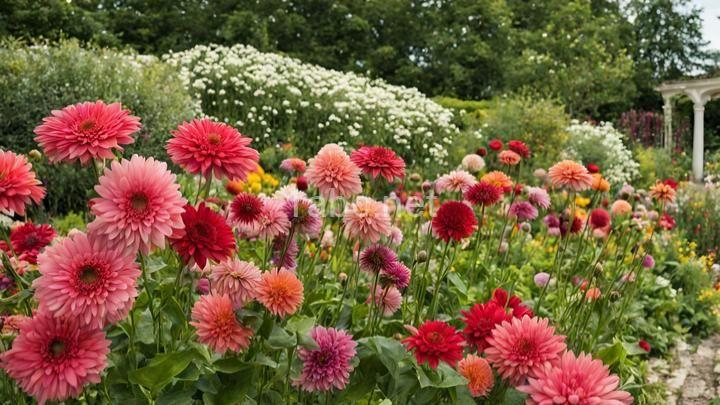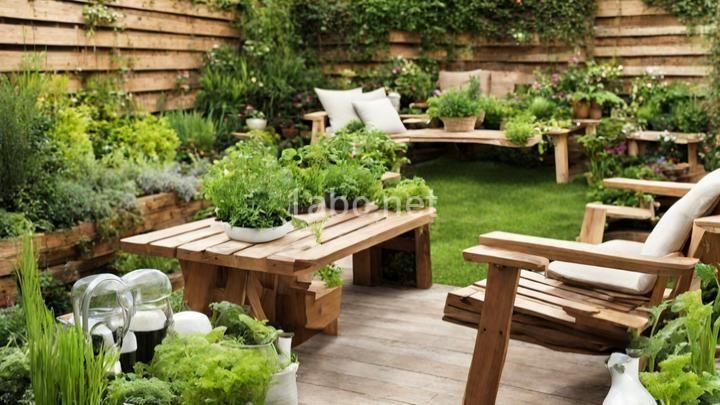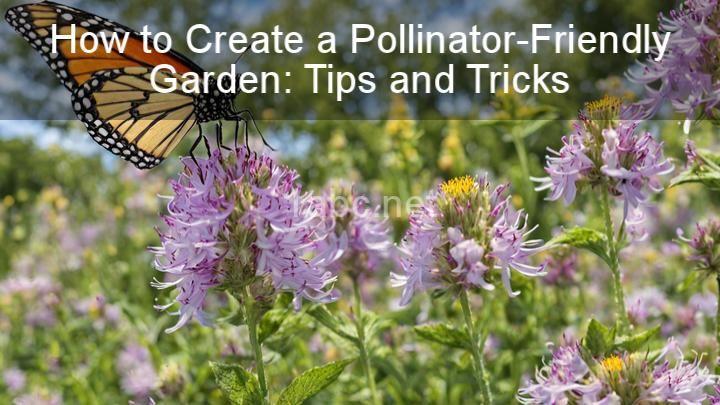How to Choose the Perfect Flowers for Your Home Garden

Hello and welcome to the blog! Today, we are going to dive into the wonderful world of gardening and explore how to choose the perfect flowers for your home garden. Whether you're a seasoned gardener or just starting out, selecting the right flowers is crucial for creating a beautiful and thriving garden. So, let's get started and discover some helpful tips and guidance on how to make the perfect flower choices for your unique space.Before we jump into the nitty-gritty of flower selection, it's essential to take a step back and assess your garden space. Understanding your garden's specific conditions will help you choose flowers that will thrive in your environment. So, grab your measuring tape and let's evaluate some key factors!
First and foremost, sunlight exposure plays a vital role in determining which flowers will flourish in your garden. Take note of how much sunlight your garden receives throughout the day. Is it full sun, partial shade, or mostly shady? This information will guide you in selecting flowers that are suited to your specific light conditions.
Next up, soil quality. Different flowers have different soil requirements, so it's essential to assess the soil type in your garden. Is it sandy, loamy, or clay? Understanding your soil composition will help you choose flowers that will grow well in your particular soil conditions.
Now, let's talk about available space. Take a look at the size and layout of your garden area. Do you have ample space for large flowering plants, or is your garden more suited to smaller, compact varieties? Consider the height and spread of the flowers you're interested in and make sure they fit well within your garden space.
Once you've assessed your garden space, it's time to determine your preferred flower types. Flowers come in various categories, such as annuals, perennials, and bulbs. Annuals are plants that complete their life cycle within one year, while perennials come back year after year. Bulbs, on the other hand, are plants that grow from underground structures and provide beautiful blooms. Each category has its own unique characteristics and benefits.
Annuals are great for providing bursts of color and are often used in bedding displays or containers. Some popular annual flower choices include petunias, marigolds, and zinnias. Perennials, on the other hand, offer long-lasting beauty and come back year after year. Examples of popular perennials include roses, lilies, and daisies. Bulbs, like tulips, daffodils, and hyacinths, add a touch of elegance to any garden. Consider your personal preferences when it comes to colors, scents, and flower shapes, and choose flowers that resonate with you.
Now that you have an idea of the types of flowers you're interested in, it's crucial to consider their maintenance requirements. Some flowers require more care and attention than others. Factors like watering needs, pruning demands, and susceptibility to pests or diseases should be taken into account. If you're a beginner or have limited time for gardening, opt for low-maintenance flower options that are easier to manage. Flowers like geraniums, impatiens, and marigolds are known for their resilience and ability to withstand various conditions.
Understanding seasonal blooming patterns can enhance the beauty of your garden throughout the year. Different flowers bloom at different times, so it's essential to plan your garden layout accordingly. By selecting flowers that bloom at different seasons, you can ensure a continuous display of vibrant blooms. Imagine a garden that transitions seamlessly from spring tulips to summer roses, and then to autumn daisies. It's like a never-ending symphony of colors and scents!
To make the most of seasonal variations, consider researching local gardening resources or seeking advice from experts in your area. Native plants often adapt well to local climates and are more likely to thrive in your garden. Local experts can provide personalized recommendations based on your specific region, ensuring that you choose the perfect flowers for your home garden.
In conclusion, choosing the perfect flowers for your home garden is a delightful and rewarding process. By assessing your garden space, determining your preferred flower types, considering maintenance requirements, exploring seasonal blooming patterns, and seeking inspiration from your local climate, you can create a garden that is not only visually stunning but also thrives in its unique environment.
Remember to take your time and enjoy the process of selecting flowers for your garden. Gardening is a journey filled with joy, learning, and surprises. So, grab your gardening gloves, get your hands dirty, and let your creativity bloom!
If you have any experiences or questions you'd like to share, we'd love to hear from you. Happy gardening!
FREQUENTLY ASKED QUESTIONS
What factors should I consider when choosing flowers for my home garden?
When choosing flowers for your home garden, there are several factors you should consider. First and foremost, think about the climate and the specific growing conditions in your area. Certain flowers thrive in certain climates, so it's important to choose varieties that are well-suited to your region.Next, consider the amount of sunlight your garden receives. Some flowers require full sun, while others prefer partial shade. Take note of the sun exposure in your garden and select flowers that will thrive in those conditions.
Another factor to consider is the size and layout of your garden. Take into account the available space and choose flowers that will fit well and complement the overall design. Consider the height and spread of the plants, as well as their growth habits.
Additionally, think about your personal preferences and the intended purpose of your garden. Are you looking for flowers with vibrant colors or a particular fragrance? Do you want to attract butterflies or bees? Consider these factors when selecting flowers, as they can enhance your enjoyment of the garden.
Lastly, consider the maintenance requirements of the flowers you choose. Some plants are low-maintenance and require minimal care, while others may need regular watering, pruning, or fertilizing. Be realistic about the time and effort you are willing to invest in maintaining your garden.
By considering factors such as climate, sunlight, space, personal preferences, and maintenance requirements, you can choose flowers that will thrive in your home garden and bring beauty and joy to your outdoor space.
How do I determine which flowers are suitable for my climate?
Determining which flowers are suitable for your climate is an important step in ensuring their success in your garden. Here are some steps to help you make the right choices:
Research your climate: Start by understanding your climate zone. This information can usually be found online or by consulting with local gardening experts. Knowing the average temperatures, rainfall, and length of your growing season will give you a good idea of the conditions your flowers will need to thrive.
Consider hardiness: Look for flowers that are known to be hardy in your climate zone. Hardiness refers to a plant's ability to tolerate cold temperatures. The United States Department of Agriculture (USDA) has developed a hardiness zone map that can help you determine which plants are likely to survive in your area.
Evaluate sun exposure: Assess the amount of sunlight your garden receives throughout the day. Some flowers require full sun, while others prefer partial shade. Understanding the sun exposure in your garden will help you select flowers that will be able to photosynthesize and grow properly.
Determine soil conditions: Take a closer look at your soil. Is it sandy, clayey, or loamy? Different flowers have different soil preferences. Some may require well-draining soil, while others thrive in moist or acidic conditions. Conduct a soil test to determine its pH levels and nutrient content, and choose flowers that are suited to those conditions.
Seek local expertise: Consult with local nurseries, garden centers, or gardening clubs in your area. They can provide valuable insights into which flowers are best suited for your specific climate and growing conditions. They may also recommend native plants, which are naturally adapted to your region and tend to be more resilient.
By considering these factors and doing some research, you can confidently choose flowers that are well-suited to your climate. Remember to also consider your personal preferences and gardening goals. Happy gardening!
What are some low-maintenance flower options for beginners?
If you're new to gardening and looking for low-maintenance flower options, there are a few varieties that are perfect for beginners. These flowers require minimal care and can thrive in various conditions. Here are some suggestions:
Marigolds: Marigolds are vibrant, hardy flowers that can tolerate different soil types and are resistant to pests. They bloom throughout the summer and fall, adding a burst of color to your garden.
Zinnias: Zinnias are easy to grow and come in a wide range of colors. They are drought-tolerant and attract pollinators like butterflies and bees. Zinnias can be sown directly into the soil or started from seed indoors.
Sunflowers: Sunflowers are not only beautiful but also low-maintenance. They are known for their tall stalks and large, cheerful blooms. Sunflowers prefer full sun and well-drained soil.
Pansies: Pansies are versatile flowers that can be grown in containers, borders, or hanging baskets. They come in a variety of colors and can tolerate both cool and warm temperatures. Pansies require regular watering and well-drained soil.
Nasturtiums: Nasturtiums are fast-growing flowers that can easily be grown from seeds. They have vibrant, edible flowers and attractive foliage. Nasturtiums prefer full sun and sandy soil.
Cosmos: Cosmos flowers are known for their daisy-like blooms and feathery foliage. They can tolerate poor soil conditions and require minimal watering. Cosmos can be started from seeds directly in the garden.
Remember, even low-maintenance flowers require some care, such as regular watering, occasional pruning, and fertilizing. However, these options are generally forgiving and can help build your confidence as a beginner gardener. Happy gardening!
Can I mix different types of flowers in my garden?
Yes, you can definitely mix different types of flowers in your garden. In fact, combining various flowers can create a vibrant and diverse garden that adds visual interest and attracts different pollinators. By mixing different types of flowers, you can create stunning color combinations and experiment with various textures and heights. However, it's important to consider the needs and preferences of each flower species when planning your garden. Some flowers may require more sunlight, while others may thrive in partial shade. Additionally, it's important to ensure that the flowers you choose have similar water and soil requirements. By doing so, you can create a harmonious and flourishing garden that brings joy and beauty to your outdoor space.

